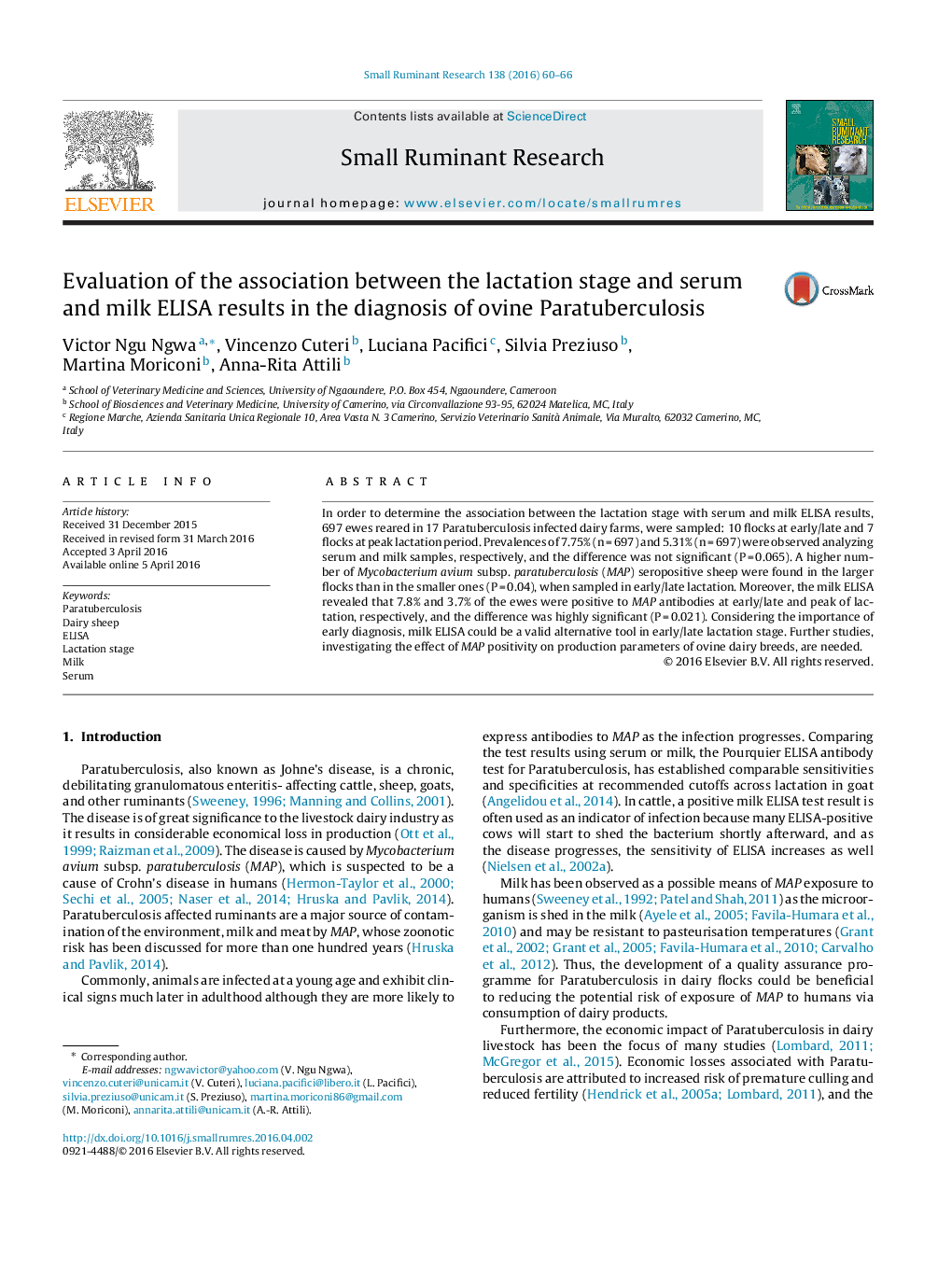| Article ID | Journal | Published Year | Pages | File Type |
|---|---|---|---|---|
| 2456747 | Small Ruminant Research | 2016 | 7 Pages |
•Ovine Paratuberculosis was studied investigating serum and milk samples.•The association, lactation stage and serum-milk ELISA results, were evaluated.•Serum and milk ELISAs were studied as tools considering flock size and breed.•Focus in the early diagnosis of ovine Paratuberculosis: the core of the issue.•The study contributes to knowledge on new diagnostic investigations.
In order to determine the association between the lactation stage with serum and milk ELISA results, 697 ewes reared in 17 Paratuberculosis infected dairy farms, were sampled: 10 flocks at early/late and 7 flocks at peak lactation period. Prevalences of 7.75% (n = 697) and 5.31% (n = 697) were observed analyzing serum and milk samples, respectively, and the difference was not significant (P = 0.065). A higher number of Mycobacterium avium subsp. paratuberculosis (MAP) seropositive sheep were found in the larger flocks than in the smaller ones (P = 0.04), when sampled in early/late lactation. Moreover, the milk ELISA revealed that 7.8% and 3.7% of the ewes were positive to MAP antibodies at early/late and peak of lactation, respectively, and the difference was highly significant (P = 0.021). Considering the importance of early diagnosis, milk ELISA could be a valid alternative tool in early/late lactation stage. Further studies, investigating the effect of MAP positivity on production parameters of ovine dairy breeds, are needed.
